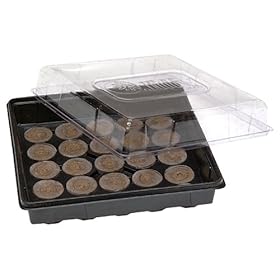To risk the frost, or not risk the frost?
Frost dates are calculated by an area's last average frost. I am tempted to push all of these dates a week or so earlier in the hopes that it will warm up early this year. Last year, I know I started my seeds indoors ahead of schedule, and likewise planted them outside ahead of schedule, I just don't remember how early. As far as I remember, that worked out just fine.
The obvious con to this plan is tempting fate a little too much with fragile seedlings. Seedlings need light and their roots need warmth when they go outside, and nighttime low temperatures can really sting in the early spring. The pros to this are a longer growing season and a (slight) remedy for my winter restlessness.
One nice thing about containers is their movability. Theoretically, I would know about a cold snap with enough warning to bring the containers inside for a few days. However, the movability of containers is tempered by how much a container full of watered soil weighs. Furthermore, keeping the plants indoors also assumes I can keep the cats away from them, which will be interesting.
Something to think about; advice is totally welcome.
Moving right along to decision #2:
How many mini-greenhouses do I want to buy?
 For the uninitiated, mini-greenhouses are essentially plastic trays with lids that house disks of peat growing material. This is the easiest way to raise seedlings (in my highly tested comparison of peat disks to, say, dixie cups with potting soil), and in my opinion, it is totally worth the extra cost to buy the materials. Further, you can purchase additional disks and the trays are reusable, though I wish they were sturdier. Anyway, these greenhouses, usually made by a company called Jiffy, come in all shapes and sizes. My growing shelf will accommodate a big hummer that holds 72 disks that I can get for $12.99 with shipping from amazon.com. However, I'm not sure I need so much space. For the same price, I can get two 12-disk trays. I think I am leaning toward the 72-disk tray, not because I need all that space, but because it may give me some flexibility in positioning the disks in the interest of their lamp.
For the uninitiated, mini-greenhouses are essentially plastic trays with lids that house disks of peat growing material. This is the easiest way to raise seedlings (in my highly tested comparison of peat disks to, say, dixie cups with potting soil), and in my opinion, it is totally worth the extra cost to buy the materials. Further, you can purchase additional disks and the trays are reusable, though I wish they were sturdier. Anyway, these greenhouses, usually made by a company called Jiffy, come in all shapes and sizes. My growing shelf will accommodate a big hummer that holds 72 disks that I can get for $12.99 with shipping from amazon.com. However, I'm not sure I need so much space. For the same price, I can get two 12-disk trays. I think I am leaning toward the 72-disk tray, not because I need all that space, but because it may give me some flexibility in positioning the disks in the interest of their lamp.The other issue is cost: I may be able to find either/both of these items for cheaper at the Home Despot. However, when I made a trip over there a few weeks ago, their garden center was still in winter mode. When I called today, I got hung up on twice being transferred from department to department, so I don't know if they have greenhouses in stock or how much they cost. Anyone have an idea on the price of these bad boys outside of Internetland?








